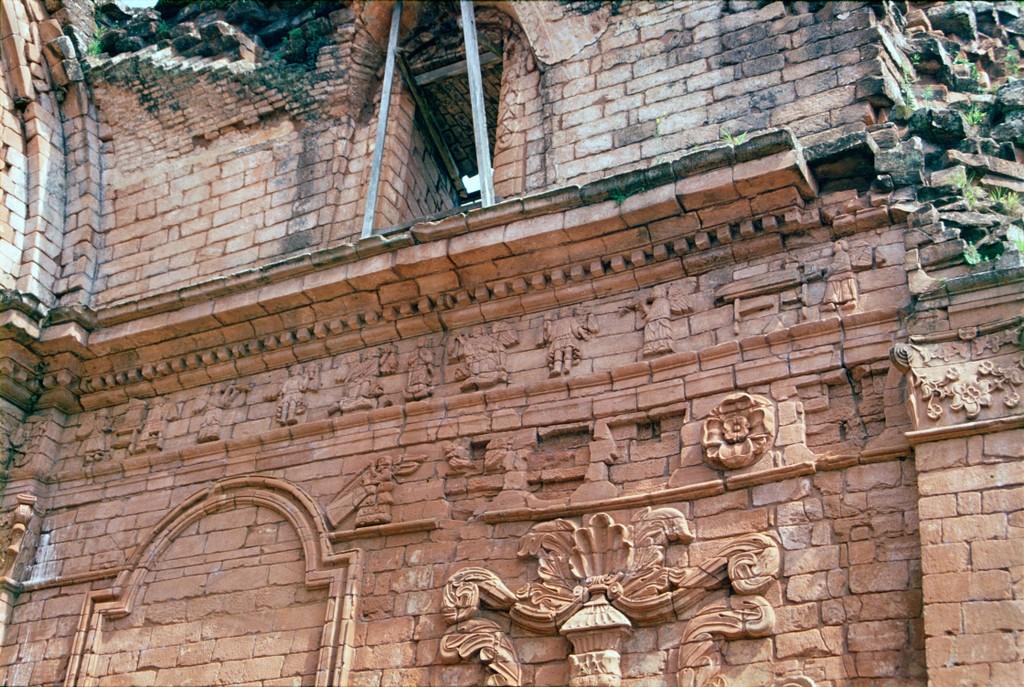
This photo, of a façade of La Santísima Trinidad de Paraná, is representative of the strong Jesuit presence in Paraguay’s colonial period as well as the pattern of overwhelming dominance that Catholicism held over Paraguay and nearly all other Latin American countries during Spanish and Portuguese colonial rule. La Santísima Trinidad de Paraná was constructed between 1706 and 1712 and was one of the last of the Jesuit reducciones that was constructed in Paraguay. These reducciones held the purpose of housing the local Guarani population, but also contained substantial religious facilities in order to proselytize them and to maintain a strong center of Catholic power in the region. The photographer of this façade was Maria Gloria Gonzalez Caceres.
John Charles Chasteen, in his “Colonial Crucible” chapter of Born in Blood and Fire, emphasized that “over hundreds of years, most Latin Americans began to sincerely accept Catholicism and the rule of a Spanish or Portuguese king,” and that “more than merely rule by outsiders, colonization was a social and cultural, even a psychological process” (Chasteen, 59). This façade is especially indicative of this deeply Catholic, deeply psychological process of colonization. La Santísima Trinidad de Paraná was designed to be a self-sufficient city where dedication to Catholicism was maintained to the utmost degree in the native Guarani population. Furthermore, the façade contains images of angels carved into the wall, symbolizing the omnipresence of the Catholic religion within the walls of the reduccion.
La Santísima Trinidad de Paraná is an exceptional example of the style of Spanish colonialism, especially the brand that took hold in Paraguay. Paraguay had little in the way of material value to offer the Spanish that colonies such as México or Peru did, so it attracted a different sort of Spanish colonization – one that was overwhelmingly focused on proselytization of the Catholic religion. The implementation of these Jesuit reducciones such as La Santísima Trinidad de Paraná, designed to be emblems of Catholic colonial power, would shape the region for centuries.
Works Cited:
Chasteen, John Charles. Born in Blood and Fire. 4th edition. New York: W.W. Norton, 2016.
La Santísima Trinidad De Paraná. Accessed April 27, 2021. https://jstor.org/stable/10.2307/community.12307666.
By Owen Arace
